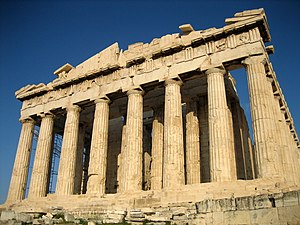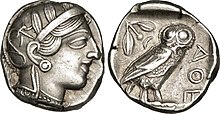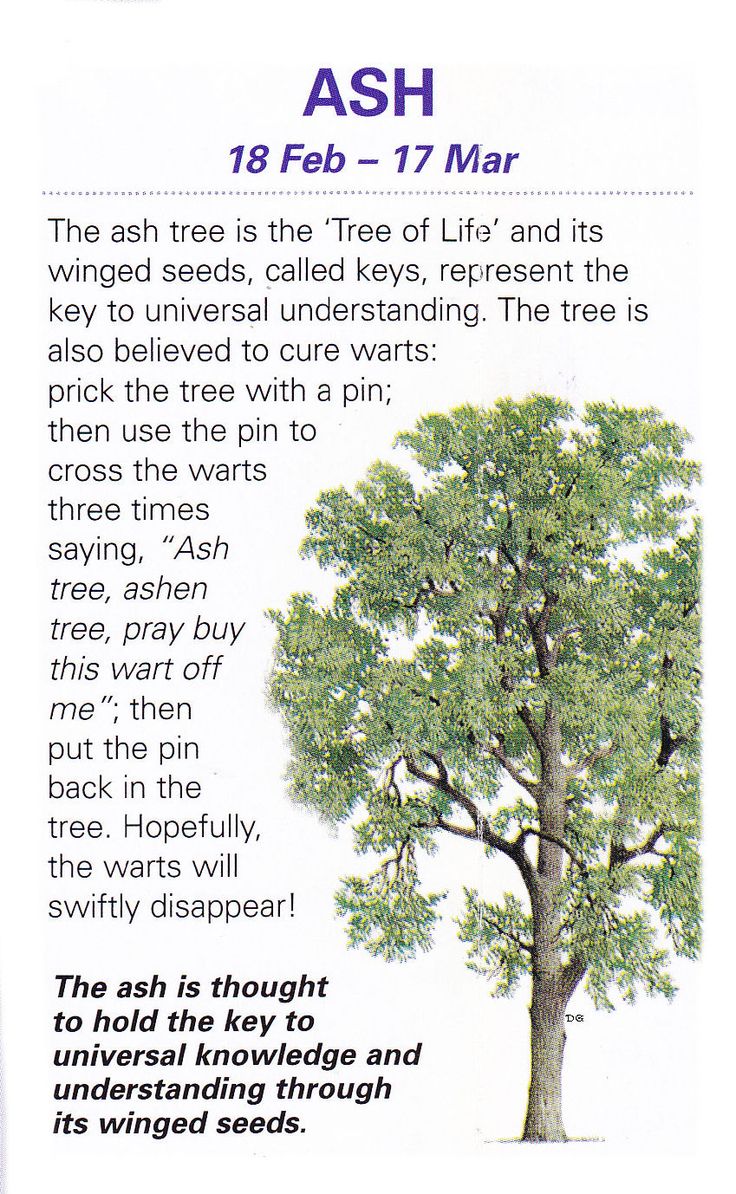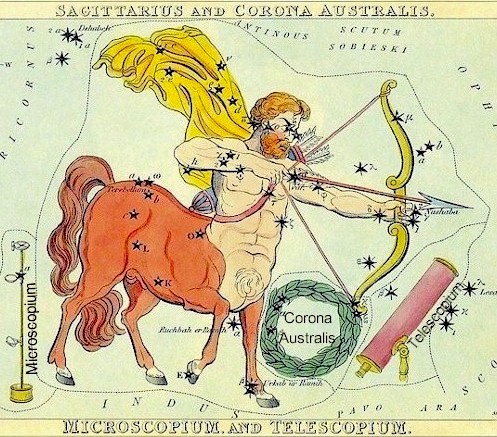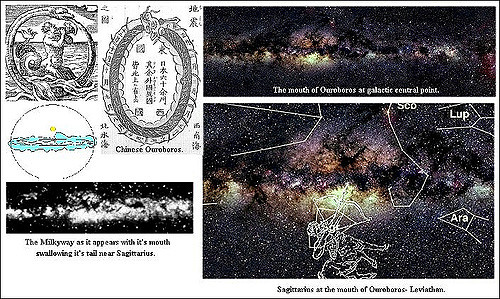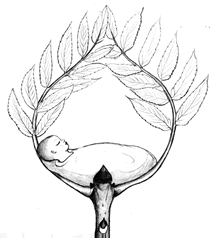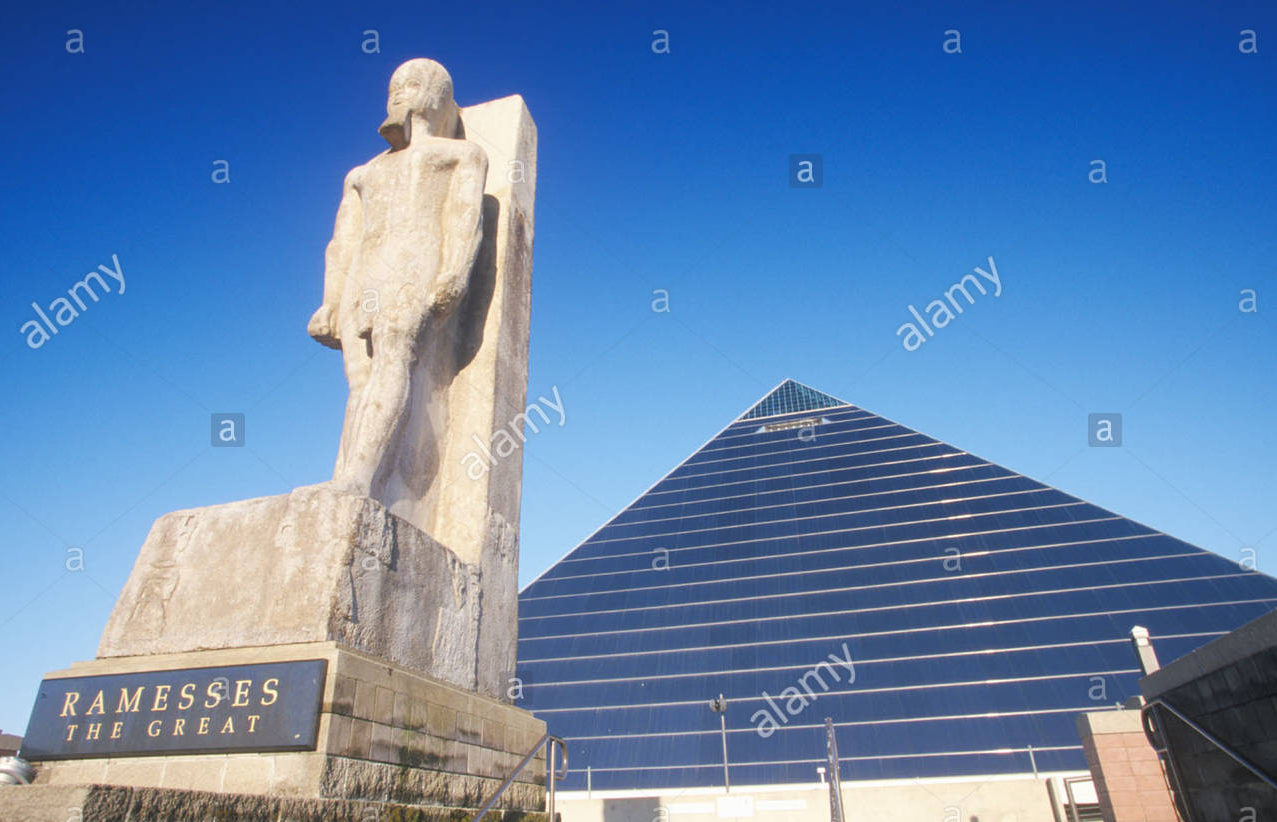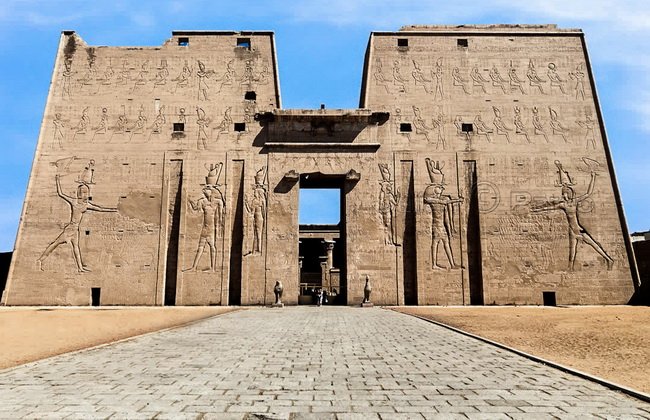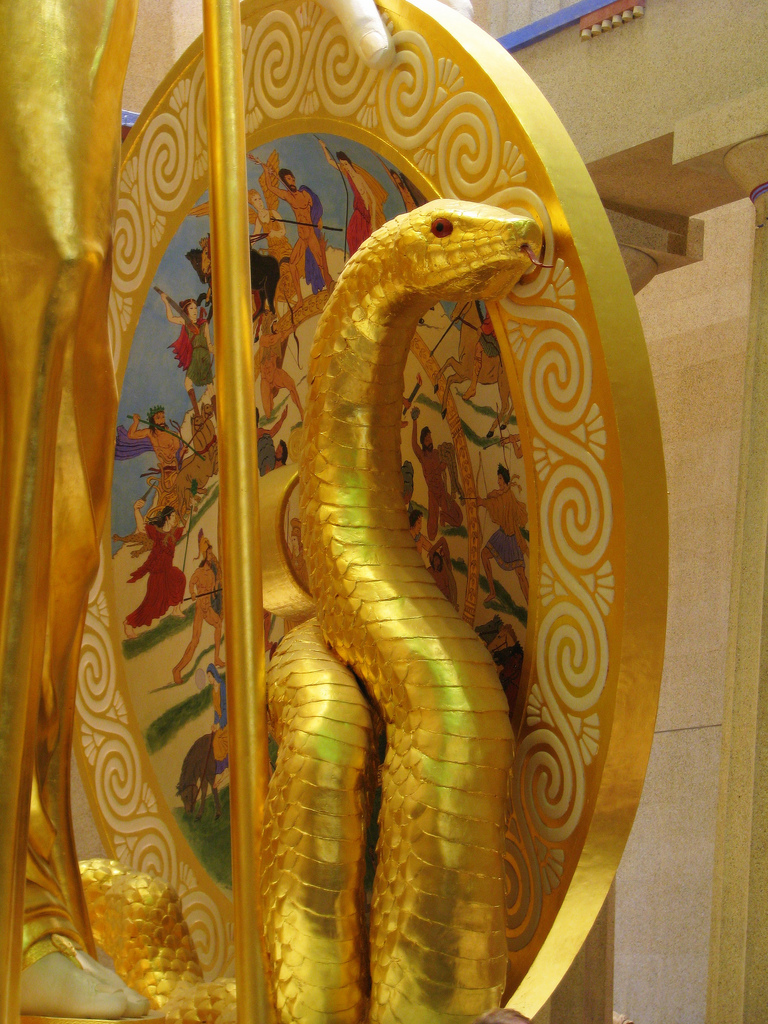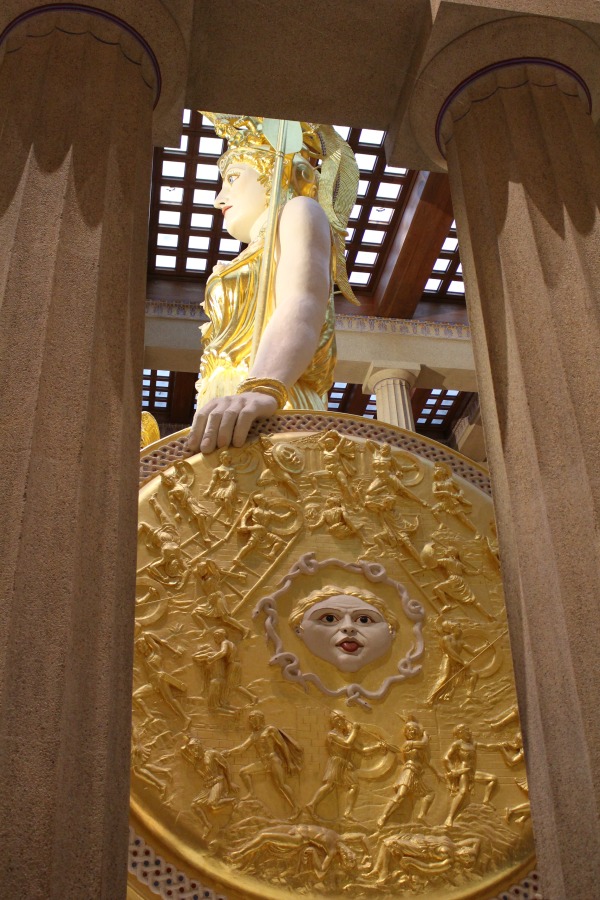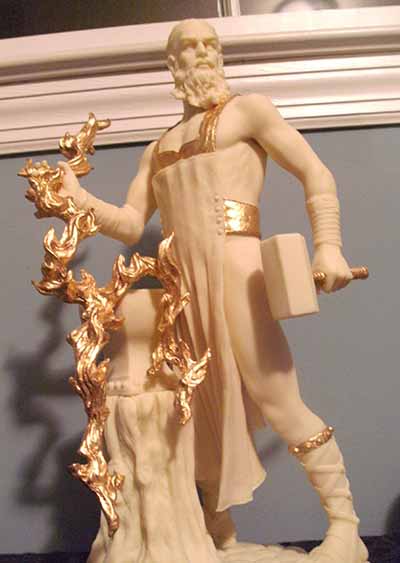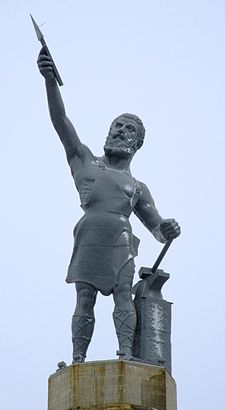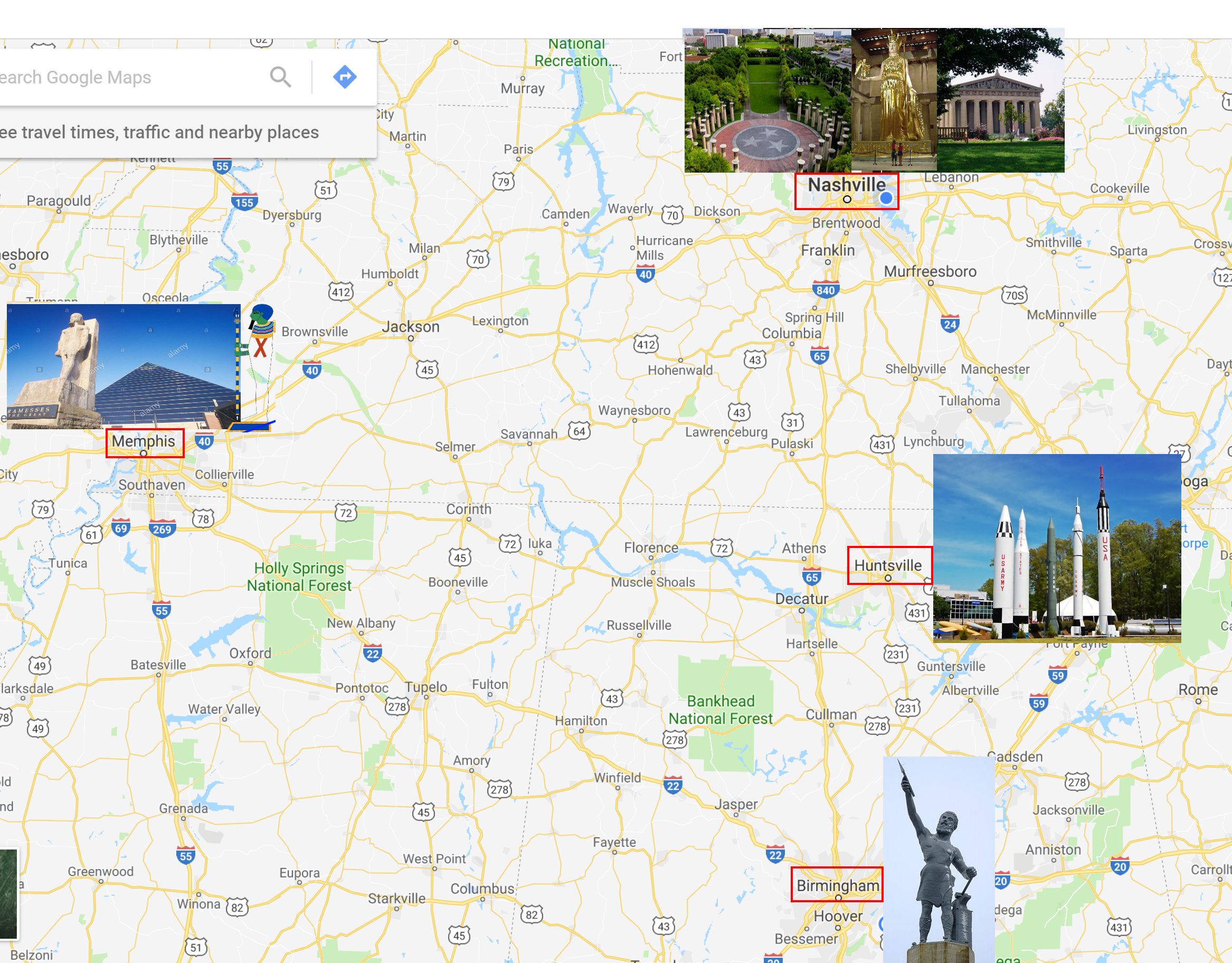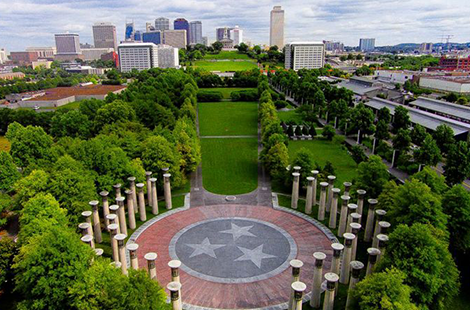Nashville :: Asherah :: Oaks
The Parthenon, a temple dedicated to Athena, located on the Acropolis in Athens, is one of the most representative symbols of the culture and sophistication of the ancient Greeks.
Ancient Greece was a civilization belonging to a period of Greek history from the Greek Dark Ages of the 13th–9th centuries BC to the end of antiquity (c. 600 AD). Immediately following this period was the beginning of the Early Middle Ages and the Byzantine era.[1] Roughly three centuries after the Late Bronze Age collapse of Mycenaean Greece, Greek urban poleis began to form in the 8th century BC, ushering in the period of Archaic Greece and colonization of the Mediterranean Basin. This was followed by the period of Classical Greece, an era that began with the Greco-Persian Wars, lasting from the 5th to 4th centuries BC. Due to the conquests by Alexander the Great of Macedonia, Hellenistic civilizationflourished from Central Asia to the western end of the Mediterranean Sea. The Hellenistic period came to an end with the conquests and annexations of the eastern Mediterraneanworld by the Roman Republic, which established the Roman province of Macedonia in Roman Greece, and later the province of Achaea during the Roman Empire.
Classical Greek culture, especially philosophy, had a powerful influence on ancient Rome, which carried a version of it to many parts of the Mediterranean Basin and Europe. For this reason, Classical Greece is generally considered to be the seminal culture which provided the foundation of modern Western culture and is considered the cradle of Western civilization.[2][3][4]
Athena (/əˈθiːnə/; Attic Greek: Ἀθηνᾶ, Athēnā, or Ἀθηναία, Athēnaia; Epic: Ἀθηναίη, Athēnaiē; Doric: Ἀθάνα, Athānā) or Athene (/əˈθiːniː/; Ionic: Ἀθήνη, Athēnē), often given the epithetPallas (/ˈpæləs/; Παλλὰς), is the ancient Greek goddess of wisdom, handicraft, and warfare.[1] In later times, Athena was syncretized with the Roman goddess Minerva.[2]
From her origin as an Aegean palace goddess, Athena was regarded as the patron and protectress of various cities across Greece, particularly the city of Athens, from which she received her name.[3] She was known as Polias and Poliouchos (derived from polis, meaning “city-state”), and her temples were usually located atop the fortified Acropolis in the central part of the city. The Parthenon on the Athenian Acropolis is dedicated to her. As the patron of craft and weaving, Athena was known as Ergane. She was also a warrior goddess, and was believed to lead soldiers into battle as Athena Promachos.
In ancient Greek literature, Athena is portrayed as the astute companion of heroes and as the patron goddess of heroic endeavour; in the Odyssey, she is the divine counselor to Odysseus, and she was believed to have also aided the hero Perseus. In Greek mythology, Athena was believed to have been born from the head of her father Zeus. She was known as Athena Parthenos (“Athena the Virgin”), but, in one archaic Attic myth, the god Hephaestus tried and failed to rape her, resulting in Gaia giving birth to Erichthonius. In the founding myth of Athens, Athena bested Poseidon in a competition over patronage of the city by creating the first olive tree. Along with Aphrodite and Hera, Athena was one of the three goddesses whose feudresulted in the beginning of the Trojan War.
In the later writings of the Roman poet Ovid, Athena was said to have competed against the mortal Arachne in a weaving competition, afterwards transforming Arachne into the first spider; Ovid also describes how she transformed Medusa into a Gorgon after witnessing her being raped by Poseidon in her temple. Since the Renaissance, Athena has become an international symbol of wisdom and the arts. Western artists and allegorists have often used Athena as a symbol of freedom and democracy.
Neith is the Egyptian Equivalent
Goddess of wisdom, handicraft, and warfare 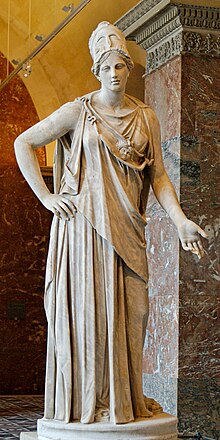 Mattei Athena at Louvre. Roman copy from the 1st century BC/AD after a Greek original of the 4th century BC, attributed to Cephisodotos or Euphranor.
Mattei Athena at Louvre. Roman copy from the 1st century BC/AD after a Greek original of the 4th century BC, attributed to Cephisodotos or Euphranor.Abode Mount Olympus Symbol Owls, olive trees, snakes, Aegis, armour, helmets, spears, Gorgoneion Personal information Children no biological children, but Erichthonius of Athens was her adoptive son Parents In the Iliad: Zeus alone
In Theogony: Zeus and Metis[Notes 1]Siblings Aeacus, Angelos, Aphrodite, Apollo, Ares, Artemis, Dionysus, Eileithyia, Enyo, Eris, Ersa, Hebe, Helen of Troy, Hephaestus, Heracles, Hermes, Minos, Pandia, Persephone, Perseus, Rhadamanthus, the Graces, the Horae, the Litae, the Muses, the Moirai Equivalents Roman equivalent Minerva Egyptian equivalent Neith Celtic equivalent Sulis The Hanging Gardens of Babylon were one of the Seven Wonders of the Ancient World, a term given to it by ancient Hellenic culture. The Hanging Gardens were described as a remarkable feat of engineering with an ascending series of tiered gardens containing a wide variety of trees, shrubs, and vines. The gardens were said to have looked like a large green mountain constructed of mud bricks.
The Hanging Gardens is the only one of the seven ancient wonders for which the location has not been definitively established.[1] Traditionally they were said to have been built in the ancient city of Babylon, near present-day Hillah, Babil province, in Iraq. The Babylonian priest Berossus, writing in about 290 BC and quoted later by Josephus, attributed the gardens to Neo-Babylonian King Nebuchadnezzar II, who ruled between 605 and 562 BC. There are no extant Babylonian texts which mention the gardens, and no definitive archaeological evidence has been found in Babylon.[2][3]
Because no physical evidence for the Hanging Gardens has been found at Babylon, two theories have been suggested. One is that they were purely mythical, and the descriptions found in ancient Greek and Roman writers including Strabo, Diodorus Siculus and Quintus Curtius Rufus represent a romantic ideal of an eastern garden.[4] If it did indeed exist, it was destroyed sometime after the first century AD.[5][6] The other theory is that they were actually in the city of Nineveh, constructed by the Assyrian king Sennacherib.[7]
According to one legend, Nebuchadnezzar II built the Hanging Gardens for his Median wife, Queen Amytis, because she missed the green hills and valleys of her homeland. He also built a grand palace that came to be known as “The Marvel of the Mankind”. Stephanie Dalley suggests that the original garden may have been a well-documented one that Assyrian King Sennacherib (704–681 BC) built in his capital city of Nineveh on the River Tigris, near the modern city of Mosul.[8]
From William Henry : The City of Secrets – Nashvill’es Code Unveiled
- Nashville, Tennessee, is the only city in the world that has reinterpretations of two epic temples from antiquity.
- Both are among the finest in existence.
- One temple is the “Queen of Heaven” Athena’s Parthenon “Virgin-temple”, 438 B.C., Athens, Greece
- The other is a $55 million 2,200-foot long rod laid out and growing on 19 acres at the base of the Tennessee State Capitol mound.
- By a masterstroke of synchronicity, it is patterned like the world axis, Mount Meru,
- the cosmic pillar or axis at the center of the world ascended by Buddha,
- and known throughout the ages as the model for all Trees of Life.
NASH From a surname which was derived from the Middle English phrase atten ash “at the ash tree”.
ASH Fraxinus/ˈfræksɪnəs/,[4]
English name ash, is a genus of flowering plants in the oliv
e and lilac family, Oleaceae.
*** Ephraim = “Double Ash-Heap”
It contains 45–65 species of usually medium to large trees, mostly deciduous though a few subtropical species are evergreen.
The genus is widespread across much of Europe, Asia and North America.[3][5][6][7][8]
The tree’s common English name, “ash”, traces back to the Old English æsc, while the generic name originated in Latin.
Both words also mean “spear” in their respective languages.[9]
The leaves are opposite (rarely in whorls of three), and mostly pinnately compound, simple in a few species.
The seeds, popularly known as “keys” or “helicopter seeds“, are a type of fruit known as a samara.
Most Fraxinus species are dioecious, having male and female flowers on separate plants[10] but gender in ash is expressed as a continuum between male and female individuals, dominated by unisexual trees.
With age ash may change their sexual function from predominantly male and hermaphrodite towards femaleness;[11]
- if grown as an ornamental and both sexes are present,
- ashes can cause a considerable litter problem with their seeds.
Rowans or mountain ashes have leaves and buds superficially similar to those of true ashes but belong to the unrelated genus Sorbus in the rose family.
Uses
- Ash is a hardwood and is hard,
- dense (within 20% of 670 kg/m3 for Fraxinus americana,[24]
- and higher at 710 kg/m3 for Fraxinus excelsior[25]),
- tough and very strong but elastic, extensively used for
- making bows,
- tool handles,
- baseball bats,
- hurleys
- and other uses demanding high strength and resilience.
- Its robust structure, good looks and flexibility combine to make ash an ideal timber for use in staircases.
- Ash stairs are extremely hard-wearing,
- which is particularly important when it comes to the treads
- (the part of the stairway that is stepped on).
- Due to its elasticity,
- ash can also be worked on to produce curved stair parts
- such as volutes (curled sections of handrail)
- and intricately shaped balusters.
- However, a reduction in the supply of healthy trees, especially in Europe, is making ash an increasingly expensive option.
- It is also often used as material for
- electric guitar bodies
- and, less commonly,
- for acoustic guitar bodies,
- known for its bright,
- cutting tone and sustaining quality.
- Some FenderStratocasters and Telecasters are made of ash, as an alternative to the darker sounding alder.
- They are also used for making drum shells.
- Interior joinery is another common use of both European and white ash.
- Ash veneers are extensively used in office furniture.
- Ash is not used much outdoors
- due to the heartwood having a low durability to ground contact,
- meaning it will typically perish within five years.
- Though constructed one hundred years apart these temples belong together.
- Their myths and symbols are interconnected.
- They are both ceremonial centers, power points of peace and community gathering that could play an essential role in the drama of our world in coming years.
TALISMANS
- Myths require reinterpretation to stay alive.
- Athena and the Cosmic Axis are alive and well in Music City.
- There may be a very provocative reason for this.
In Greek mythology,
- the Meliae were nymphs of the ash,
- perhaps specifically of the manna ash (Fraxinus ornus),
- as dryads were nymphs of the oak.
They appear in Hesiod’s Theogony.
- The ash exudes a sugary substance that, it has been suggested,
- was fermented to create the Norse Mead of Inspiration.[27]
- In Norse mythology, Yggdrasill was often seen as a giant ash tree.
- Many scholars now agree that in the past an error had been made in the interpretation of the ancient writings,
- and that the tree is most likely a European yew (Taxus baccata)[citation needed].
- This mistake would find its origin in an alternative word for the yew tree in the Old Norse, namely needle ash (barraskr).
- In addition, ancient sources, including the Eddas, write about a vetgrønster vida, which means “evergreen tree”.
- An ash sheds its leaves in the winter, while yew trees retain their needles. The first man, Ask, was formed from the “ash tree”.
Yggdrasil,
- the World Tree in Viking mythology,
- grew on an island surrounded by the ocean,
- in the depths of which the World Serpent lay.
This ash tree’s trunk reached up to the heavens, and its boughs spread out over all the countries of the Earth.
- Its roots reached down into the Underworld.
- A squirrel ran up and down the tree carrying messages from the serpent gnawing at the roots to the eagle in the canopy, and back.
- A deer fed on the ash leaves and from its antlers flowed the great rivers of the world.
- A magical goat grazed by the tree, and its udders dispensed not milk but mead for the warriors in Odin’s Great Hall.
- The gods held their councils under the canopy of their guardian tree.
Odin,
- the foremost god of the Vikings,
- hung himself on Yggdrasil as a sacrificial ordeal,
- during which he lost an eye to ravens.
The star at the Tip of the spear in Sagitarrius (“the Archer” / half man / half goat) is called “Nash”
Ultimately though, he was rewarded with insights and wisdom, notably knowledge of the system of the Runes.
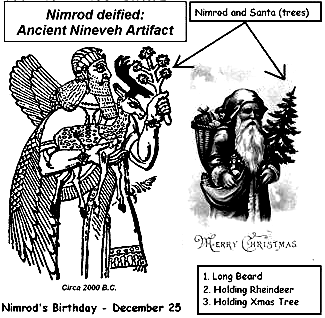
- Both he and Thor, the god of thunder, were said to possess magical spears made of ash wood.
- Mortals’ spear shafts were also typically made of ash (as were bows, in the absence of yew, and arrow shafts).
- The words for ash and spear seem to be related in that a poetic Anglo-Saxon word for spear was aesc and the Norse word for ash was ask (influencing Highland place names such as Port Askaig).
- The Vikings were also referred to as the Aescling meaning ‘Men of Ash’.
Like the Vikings, the Gaels also thought of the ash tree (which they called uinsinn, pronounced ooshin) as protective.
- Of the five legendary guardian trees of Ireland, three were ash.
- Ash is also the second most popular tree growing beside Irish holy wells, and on the Isle of Man ash trees were said to protect the purity of springs.
- In England the ash is the commonest tree as a place name element after the thorn.
The generally accepted meaning of Old Norse Yggdrasill is “Odin’s horse”, meaning “gallows“.
- This interpretation comes about because drasill means “horse” and Ygg(r) is one of Odin’s many names.
- The Poetic Edda poem Hávamál describes how Odin sacrificed himself by hanging from a tree, making this tree Odin’s gallows.
- This tree may have been Yggdrasil.
- Gallows can be called “the horse of the hanged”
- and therefore Odin’s gallows may have developed into the expression “Odin’s horse”,
- which then became the name of the tree.[1]
Nevertheless, scholarly opinions regarding the precise meaning of the name Yggdrasill vary,
- particularly on the issue of whether Yggdrasill
- is the name of the tree itself
- or if only the full term askr Yggdrasil (where Old Norse askr means “ash tree”) refers specifically to the tree.
According to this interpretation,
- askr Yggdrasils would mean the world tree upon which “the horse [Odin’s horse] of the highest god [Odin] is bound”.
- Both of these etymologies rely on a presumed but unattested *Yggsdrasill.[1]
A third interpretation,
- presented by F. Detter, is that the name Yggdrasill refers to the word yggr (“terror”),
- yet not in reference to the Odinic name,
- and so Yggdrasill would then mean “tree of terror, gallows”.
F. R. Schröder has proposed a fourth etymology according to which yggdrasill means “yew pillar”,
- Elsewhere in Europe, snakes were said to be repelled by ash leaves or a circle drawn by an ash branch.
- Irish folklore claims that shadows from an ash tree would damage crops.
- In Cheshire, it was said that ash could be used to cure warts and rickets.
- In Sussex, the ash tree and the elm tree were known as “widowmakers” because large boughs would often drop without warning.
- In their book, Talisman: Sacred Cities, Secret Faith, Graham Hancock and Robert Bauval
- soundly document that the architecture of great cities such as Paris and Washington DC
- are secretly being used by Hermeticists, Masons and Alchemists
- to transmit hidden knowledge from antiquity.
- They endowed these cities with spiritual power through architecture.
- (Hermitage)

Hermes conducts a soul with his rod
- The designers of these ‘light centers’ (my term) used what the French alchemist Schwaller De Lubicz called “the Symbolique”,
- the use of mystical architecture as a means of knowledge transmission.
- Books, these craftsmen know, can be burned.
- Knowledge encoded in the shapes (geometry) and symbols of various mystical buildings and other constructions can stand for centuries.
- It’s a way of keeping myths alive and hiding secrets in plain sight that counts on the total blindness of the average individual to the esoteric language of symbols.
- Hancock and Bauval claim the secrets these ‘illumined ones’ are transmitting originated with Hermes,
- the Greek name for the legendary instructor,
- prophet and scribe deified by the Egyptians as the god Thoth
- and known to the Hebrews as Enoch,
- who was “snatched” into heaven by a whirlwind and (star) walked with God.
- The far older Sumerians called him Lord Enki, the god of smithcraft and alchemy, who led the Anunnaki, the ‘50 gods who came to earth from heaven’.
- Z. Sitchin says he was the model for the Serpent of Wisdom of Genesis and is considered the bearer of mystic secrets.
- As I will show, Nashville’s talismans have deep connections to Enki and the Anunnaki. They clearly point to Nashville’s Hermetic nature.
- In fact, understood in its spiritual sense Nashville may be the ultimate Hermetic city light center.
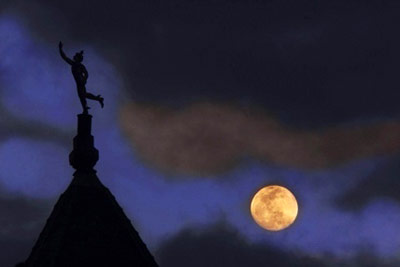
Hermes stands tall atop Nashville’s Union Station Hotel Photo © John Partipilo
THE VIRGIN’S TEMPLE
- Nashville is called “the Athens of the South.”
- Her life-size copy of the Parthenon was constructed in 1897 to celebrate Tennessee’s Centennial and rebuilt in the 1920s.
- Inside is sculptor Alan LeQuire’s masterpiece commissioned in 1982, a 41-foot, 10-inch tall statue of the lost Athena-Parthenos.
- She’s the tallest indoor sculpture in the Western world.
- Considered to be the Serpent’s Eve reborn and exalted after the Deluge (THE SINKING OF ATLANTIS / Babylon), the immortal Athena stands with her holy rod of power and spear in her hand.
- Her giant serpent rises at her feet, the protector of the acropOlis (place of secrets) at Athens.
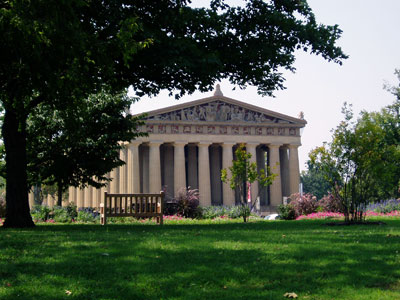
The Parthenon-Nashville is a duplicate of Athena’s temple
- In Greek myth the god of smithcraft/alchemy, Hephaestus (the Sumerian Enki), crafted this rod for Athena.
- The East Frieze on Athena’s Parthenon, it is claimed, contained all the elements of Plato’s Atlantis texts and suggests that the Parthenon was built to commemorate both Athena and Hephaestus Enki, since they both championed the Athenians in the epic War between Athens and Atlantis.
- Clothed in leaves of 23.75-karat gold leaf in 2002, Nashville’s golden goddess replicates what historians believe the original statue of Athena looked like.
- She is stunning, even bedazzling to behold (when was the last time you stood in front of so much gold?).
- It’s breathtaking when they open the 8 ton bronze doors to her temple and let the Sun shine in.
- Significantly, Athena beams at a 2,200-foot long ‘rod’ that has been growing since 1996 in front of the north slope of the artificially tiered mound upon which sits the State Capitol, a few short miles away.

Athena
- Known as the Bicentennial Capitol Mall (a park, not a shopping mall), its designers say this rod was “forged to honor the Capitol and exalt all that is Tennessee.”
- (This is an interesting choice of words considering Hephaestus also forged Athena’s rod.)
- The Capitol itself is a Greek Revival ‘temple of democracy’.
- A student of Thomas Jefferson, the famed Philadelphia architect William Strickland, designed this acropolis in 1845.
- He also produced Nashville’s Egyptianesque First Presbyterian Church, whose façade duplicates Horus’s temple at Edfu.
- (Technically, this makes Nashville home to three epic temples from the ancient world.)
- The Tennessee Bicentennial Capitol Mall State Park located at the base of the State Capitol in downtown Nashville features a 2,200-foot long ‘rod’ laid out on 19 acres
 |
 Nashville’s Bicentennial Mall radiates an eerie glow at night. Photo © John Partipilo |
- When the Mall was opened in 1996 it was proclaimed the sister complex to the National Mall in Washington DC; a fact which sends Masonic bells ringing for some.
- Until I came along in 1999, no one noticed the uncanny similarity of its design to a second century drawing of Enki’s mystical Meru rod.
- Both designs feature a circular platform upon which sits a tapering rod topped by a triangular shape.
- While Kem Hinton, the architect who led the Mall’s design team, told me he does not see a similarity in the designs, it is plainly evident to many with what he calls ‘untrained’ eyes.

Meru (left) and the Tennessee Bicentennial Capitol Mall
- The Meru diagram is a mandala, a mnemonic device, designed to guide the neophyte into meditation and communion.
- The Meru rod resembles an antenna because that’s what Meru myth says it was.
- It is claimed that the immortals or the Great Spirit (symbolized in Judaism by a Serpent of Wisdom) lived at Meru
- because of the protecting power of the healing universal life force energy
- – the Key of Life – emitted (or transmitted) by Meru.
- The triangular apex at the top of the pillar symbolizes Shambhala, the dwelling of the gods.
- Meru is symbolic of the antenna-like beacon or link the Dur~An~Ki Sitchin says was used by the Anunnaki for sending messages heavenward and as a ceremonial center for state visits of Anu, Enki’s father, to Su-Meru.
Mount Meru, in Hindu mythology, a golden mountain that stands in the centre of the universe and is the axis of the world. It is the abode of gods, and its foothills are the Himalayas, to the south of which extends Bhāratavarṣa (“Land of the Sons of Bharata”), the ancient name for India. The roof tower crowning the shrine in a Hindu temple represents Meru. As the world axis, Mount Meru reaches down below the ground, into the nether regions, as far as it extends into the heavens. All of the principal deities have their own celestial kingdoms on or near it, where their devotees reside with them after death, while awaiting their next reincarnation.
THE HOLY GRAIL IN NASHVILLE
- As I tell in my book City of Peace, I chanced upon Nashville’s Mall-Meru cross in 1999 while researching FDRs quest for the secrets of Jesus in Shambhala, the apex of Meru, in Mongolia in 1934.
- I followed a clue in a coded letter sent by Henry A. Wallace, FDR’s Secretary of Agriculture and partner in this ‘Grail quest’, to the famed guru Nicholas Roerich, the third ‘wise man’ in this trinity.
- It suggested that Nashville, TN was a possible repository for the results of their investigation.
- The key clue that led me to the Mall site was Wallace’s mention of a ‘sacred casket’ or coffin and a location in America marked by ‘seven stars under three stars’.
- Tennessee’s state flag is the only flag in the union that has only three stars.
- According to state archaeologists, the Mall site has been used as a ceremonial center since 900 AD when the Mississippian culture built a ceremonial mound royal grave just seventy yards away.
- “Vast numbers” of bodies are interred here. This makes this site a giant coffin.
- This is synchronistic as the Arabs called the seven stars of the Big Dipper ‘Nash’, which meant ‘the great coffin’.
- The Sumerians called this constellation Meru, meaning the sacred casket.
- Middle Tennessee was originally called “the Mero District.”
- Hermes/Thoth’s ‘As above. So below’ law is clearly evidenced by these place names and the early usage of the Mall site as a burial ground necropolis.
LONG WALKS
- Since 2000, I’ve walked the Mall and the Parthenon with thousands of people, including artists, musicians, engineers, and shamans.
- All have been astounded by the elements of their craft intricately woven into the design of this amazing rod.
- If you’re one of the over one million people who visit the Bicentennial Capitol Mall annually you may only see the grand works of stone and trees, because those who visit normally look at it from the outside looking in.
- However, the stone works are actually Hermetic mystery symbols.
- It’s a codebook that even features a billion year timeline that goes back to the creation of this world!
- The rod portion of the Mall has seven springs running beneath it. (The cosmic Tree of Life is always rooted in water.)
- Each of the body’s seven chakras is perfectly marked with appropriate symbolism at the Mall.
- It is truly a Seven-Gated Magician’s Rod fitting of Hermes.
- This living temple is lined with oak trees, which means it fits the biblical definition of an Ashera.
- The Hebrew word ashera, rendered grove in the Authorized Version of the Bible refers to a living or wooden pillar or a grove of trees of the Anunnaki goddess, Is-Tara or Astarte.
- Ashi is the Sumerian root for ‘heal’.
- These healing pillars of worship, where the Great Wise Serpent/Spirit (Enki?) manifested, were forbidden by the Jewish patriarchy.
- The fact that the ashera was the place of worship of Ishtar is integral to decoding the Mall.
“The oak leaf and acorn have long been symbols of Va
nderbilt and are found in the crest of the Vanderbilt family,” said Judy Orr, director of Creative Services.
“We thought it important to have a sense of timelessness and tradition in our final product, which I believe we accomplished.”
V inside the Pentagram (star of Ashtoroth)
V = Venus; The Queen of Heaven (Asherah )
H842; אֲשֵׁרָה ʼăshêrâh, ash-ay-raw’; or אֲשֵׁירָה ʼăshêyrâh; from H833;
- happy; Asherah (or Astarte) a Phoenician goddess;
- also an image of the same:—grove. Compare H6253.
- Ashera(h) = “groves (for idol worship)”
- a Babylonian (Astarte)-Canaanite goddess (of fortune and happiness), the supposed consort of Baal, her images
- the goddess, goddesses
- her images
- sacred trees or poles set up near an altar
- Ishtar is another name for Inanna, a probable precursor to Athena.
- Both goddesses were portrayed with a rod and serpent.
- Further, Innana’s father was Enki (Athena’s Hephaestus)!
- It is my belief that Athena’s rod is a symbol for Hephaestus’s (Lord Enki’s) Meru rod and a variation of it is growing near her temple in downtown Nashville.
- Supposedly, it all happened by coincidence.
- Stranger synchronicities have happened in mythology, I just can’t think of any off the top of my head.
THE BLACK SUN
- There is more to connect Nashville’s Mall to Meru myth.
- For example, the eerie WW II Memorial temple at the Mall features an 18,161-pound black granite globe spinning on 1/8 inch of water.
- With the Sun shining upon its black mirror-like surface it becomes a ‘Night Sun’ or a ‘Black Sun,’ the symbol for an eclipses, but also for the innermost occult circle of the Nazis, the ‘Order of the Black Sun’.
- Strangely, the Germans built this black mirror.
- This is simply amazing.
- According to W.H. Muller in his book ‘Polaria’, “the Black Sun is the Beacon of the World-Mountain (Meru) spinning in the Space of Spirit’.”
- Now that is just plain spooky.
 This Black Sun completes the Nashville’s Mall as a Meru Axis |
 The stone circle or Gilgal. The three stars symbolize the ‘third eye’ and enlightenment |
- At the apex of the Bicentennial Mall is a Stonehenge-like stone circle called the Court of Three Stars.
- Two concentric rings of (sacred) 50 twenty-five foot tall solid limestone pillars form its ‘C’ shape.
- The 4-foot diameter, Egyptian djed-like pillars hold 95 bells of different pitches (one for each county in Tennessee) that form a musical instrument called a carillon – the largest in the world.
- The 95 bells resonate with a 96th bell located beside the Capitol.
- Coincidentally, the Land of Shambhala, with Meru as its center, has 96 principalities.
96 Pomegranates lined Pillars of Solomon’s Temple
- Now, the biblical name for a circle of upright stone pillars (usually 12) is gilgal.
- This was the place where Elijah ascended in a whirlwind.
- It is the root of Gulgotha, ‘the place of the skull’, where Jesus was ‘crucified’.
- The Nashville gilgal’s floor is made of red, white and blue granite that sparkles in the sunlight.
- That’s because, as researchers such as Christopher Dunn and Freddy Silva note,red granite is loaded with quartz crystal.
- This ‘firestone’ is a formidable conductor of energy, which is why it is the tuner of choice of the ancient stone workers of Egypt and Britain.
- (Remember, after all, Meru is described as an antenna.)
- Granite is considered a masculine stone.
- Limestone, which is associated with water, is considered to have feminine properties.
- Together, the granite floor and limestone pillars charge the Court of Three Stars with positive and negative polarity, just like an electrical circuit.
- Etched into this granite ‘tuner’ is a trinity of 15-foot wide pentacles – a protective symbol known as Solomon’s Seal… and the star of Ishtar or Athena.
- At their center is the
 logo for Tennessee, a triceps, a triangle or trinity formed of three diamonds.
logo for Tennessee, a triceps, a triangle or trinity formed of three diamonds. - One of the most powerful ancient symbols, the triceps is an ancient Nordic symbol of divine force, power and protection.
- It symbolizes the A U M trinity.
- It matches the alchemical symbol called the caput mortum, the skull or death’s head , the starting point for Enki’s alchemical work of transforming a human – the impure or base metal – into pure gold.

As alchemist Robert Fludd’s drawing of the ‘perfected man’ indicates, the Mall symbolizes higher consciousness
- Driven into the exact center, “the Holy of Holies,” of this magnificent acoustic chamber – or satellite dish – is an iron rod.
- When we stand on it and make a sound we experience an intense reverberation (almost as if we’re speaking directly into Enki’s ear).
- Stone circles have appeared as markers of places of power.
- The stone circle atop the rod in Music City clearly is an instrument of divine force, power and protection that qualifies this site as Hermetic.
- When we add all these symbols together, they point to one overwhelming conjecture.
- The Nashville Mall is a mandala, a(n) Anunnaki? place of initiation into the means to operate our inner Tree of Life Meru Rod and to connect with the divine realm of Enki, Thoth, Hermes, and Enoch.
- Nashville is, unquestionably, a city whose talismanic symbols place it in the Hermetic big leagues along with Washington DC and Paris.
- Perhaps it is time for Nashville’s secrets to ring.
- This brings up a very profound point.

Is Jesus, the Fisherman, raising Lazarus with a fishing pole or the Meru rod? Vatican Museum
- Students of Judeo-Christian prophecy claim that the ‘End Time’ will see the appearance of Revelation 12’s ‘woman clothed with the sun’ who bears a child who rules with a rod of iron.
- It will also see the return of the prophet Elijah (through the gilgal, I presume) and the rebuilding of Solomon’s Temple, an act that is instrumental in the creation of the New Thousand Years of Peace.
- It is thought that Elijah will return the Rod of Jesse – the rod signifying his power, a branch from the Tree of Life – to the Messiah, who will be seated on the Mercy Seat in the Holy of Holies of Solomon’s Temple on Mount Moriah (or is it Meru?).
- He will replace the Ark of the Covenant that had symbolized him, in the place where God is believed to have first walked with Adam and Eve, the Garden of Eden.
- Just as a branch from the Tree of Life was kept before the Ark, he will set the Rod of God before himself on the Throne of God, where the Tree of Life had grown in the Garden of Eden.
- Could Revelation’s mysterious woman clothed with the sun be the gold (sun) clad Athena?
- Has the rod of destiny, in the form of a 2,200-foot long living temple, manifested in Nashville?
- Is Nashville the ultimate light center?
- Come to Nashville, take a walk with me, and see for yourself
JUDGES 6 : THE CALL OF GIDEON
11And there came an angel of the LORD, and sat under an oak which was in Ophrah, that pertained to Joash the Abiezrite: and his son Gideon threshed wheat by the wine press, to hide it from the Midianites.
I live 2 miles from Vanderbilt whose symbol is the Leaf and acorn.The new visual identity, designed by Malcolm Grear Designers in Providence, R.I., is built around a central image of the letter “V” encompassing a stylized oak leaf and acorn.“The oak leaf and acorn have long been symbols of Vanderbilt and are found in the crest of the Vanderbilt family,” said Judy Orr, director of Creative Services. “We thought it important to have a sense of timelessness and tradition in our final product, which I believe we accomplished.”Oak Hill is a city in Davidson County, Tennessee, 3 Miles from house.
The Tennessee Governor’s Mansion, also known as the Tennessee Residence, in Oak Hill, Nashville, Tennessee, is the official residence of the Governor of Tennessee and his or her family.The leaves and acorns (the fruit) of the oak tree are poisonous to cattle, horses, sheep, and goats in large amounts due to the toxin tannic acid, and cause kidney damage and gastroenteritis.
LUKE 3 : THE MISSION OF JOHN THE BAPTIST (Isaiah 40:1-5; Matthew 3:1-12; Mark 1:1-8; John 1:19-28)
7Then said he to the multitude that came forth to be baptized of him, O generation of vipers, who has warned you to flee from the wrath to come? 8BRING FORTH THEREFORE FRUITS WORTHY OF REPENTANCE, and begin not to say within yourselves, We have Abraham to our father: for I say to you, That God is able of these stones to raise up children to Abraham. 9And now also the ax is laid to the root of the trees: every tree therefore which brings not forth good fruit is hewn down, and cast into the fire.
to come? 8BRING FORTH THEREFORE FRUITS WORTHY OF REPENTANCE, and begin not to say within yourselves, We have Abraham to our father: for I say to you, That God is able of these stones to raise up children to Abraham. 9And now also the ax is laid to the root of the trees: every tree therefore which brings not forth good fruit is hewn down, and cast into the fire.
Gideon [h1439]גִּדְעוֹן Gidʻôwn, ghid-ohn’;occurs 39 in 37
- Gideon = “hewer”, “cutter down”
- feller, brave warrior
- youngest son of Joash of the Abiezrites, fifth judge of Israel who led the Israelites against the Midianites
from H1438; גָּדַע gâdaʻ, gaw-dah’; a primitive root;
- to fell a tree; generally, to destroy anything:
- —cut (asunder, in sunder, down, off), hew down.
JUDGES 6 : THE CALL OF GIDEON
12And the angel of the LORD appeared to him, and said to him, The LORD is with you, you mighty man of valor. 13And Gideon said to him, Oh my Lord, if the LORD be with us, why then is all this befallen us? and where be all his miracles which our fathers told us of, saying, Did not the LORD bring us up from Egypt? but now the LORD has forsaken us, and delivered us into the hands of the Midianites.
My grandfather was representing the Senatobia, MS camp Gideon church.
The name Senatobia was derived from the Indian word Senatohoba,which means “White Sycamore”—a symbol of “rest for the weary.” The Pharoah called Joseph Zaphnath-paaneahwhich means “treasury of the glorious rest”.
Senatobia is located in Tate County 30 minutes outside Memphis, TN but is part of the Memphis, TN–MS–AR Metropolitan Statistical Area.
PTAH
The statue of the Pharaoh Ramasses the Great in Memphis, Tn
In Egyptian mythology, Ptah is the demiurge of Memphis, god of craftsmen and architects. Memphis was believed to be under the protection of the god Ptah, the patron of craftsmen. Its great temple, Hut-ka-Ptah (meaning “Enclosure of the ka of Ptah”), was one of the most prominent structures in the city. The name of this temple, rendered in Greek as Aί-γυ-πτoς (Ai-gy-ptos) by the historian Manetho, is believed to be the etymological origin of the modern English name Egypt.
The Downtown Presbyterian Church in Nashville, Tennessee, a part of the Presbyterian Church (USA), was formerly known as First Presbyterian Church. The church is located at the corner of Fifth Avenue and Church Street. As Old First Presbyterian Church it was designated a National Historic Landmark in 1993, for its distinctive Egyptian Revival architecture.[2]
Downtown Presbyterian Church is one of the few examples of Egyptian Revival architecture in the United States, and may be the best surviving ecclesiastical example. William Strickland also designed the second Mikveh-Israel Synagogue in Philadelphia in 1825 with Egyptian Revival elements, but it has not survived. Two other churches in theUnited States with Egyptian architectural themes that have survived are the First Baptist Church of Essex, Connecticut, and the First Presbyterian Church (Sag Harbor), New York, also known as the Whalers’ Church.
The church is modeled after the Temple of EDFU.The Temple of Edfu is an Egyptian temple located on the west bank of the Nile in Edfu, Upper Egypt. The city was known in the Hellenistic period as Koine Greek: Ἀπόλλωνος πόλιςand Latin Apollonopolis Magna, after the chief god Horus, who was identified as Apollo under the interpretatio graeca.[1] It is one of the best preserved shrines in Egypt.
Gideon was tasked by God to throw down the Altar of Baal and the Grove beside it.In this picture my Grandfather was passing out Gideon bible’s at the Ole Miss university who are known as the “Rebels” and are famous for “THE GROVE”.
Described as “the Holy Grail of tailgating sites” by Sporting News,[4]It is the tailgating area located at the center of the University of Mississippi (Ole Miss) campus. It is approximately 10 acres (4.0 ha) in size. The Grove takes its name from “the oak, elm and magnolia trees surrounding the area.
25And it came to pass the same night, that the LORD said to him, Take your father’s young bullock, even the second bullock of seven years old, and throw down thealtar of Baal that your father has, and cut down the grove[h842] that is by it:
Grove[h842]אֲשֵׁרָה ʼăshêrâh(occurs 40 in 40)
- happy;
- Asherah (or Astarte) a Phoenician goddess;
- also an image of the same:—grove.
- wooden pillars
Asherah [h842] אֲשֵׁרָה ʼăshêrâh, ash-ay-raw’; occurs 39 in 37
- Ashera(h) = “groves (for idol worship)”
The star of Ashtoroth with the V (Venus) in the middle (aka Vanderbilt logo)
- a Babylonian (Astarte)-Canaanite goddess (of fortune and happiness), the supposed consort of Baal, her images
- the goddess, goddesses
- her images
- sacred trees or poles set up near an altar
- associated with the planet Venus
- happy;
- Asherah (or Astarte) a Phoenician goddess; also an image of the same:—grove.
- from H833;
Compare [h6253] עַשְׁתֹּרֶת ʻAshtôreth, ash-to’reth;
- Ashtoreth = “star”
- probably for H6251;
- Ashtoreth, the Phoenician goddess of love (and increase):—Ashtoreth.
- the principal female deity of the Phoenicians worshipped in war and fertility
- also ‘Ishtar’ of Assyria and ‘Astarte’ by the Greeks and Romans
THE PARTHENON (“virgin’s temple”) in NASHVILLE
- The centerpiece of Centennial park serves as a monument to what is considered classical architecture
- It contains 50 pillars that 34 feet high and 6.2 feet in diameter
- 17 on each side
- 8 in the front and back
- The doors of the temple are 8 tons of bronze
The 8 ton bronze door open to what is the Largest Indoor sculpture in the World of the Greek Goddess ATHENA.
- She was crafted by Alan Lequire in 1982 and stands 42 feet tall.
- She was clothed in more than 8 pounds of 23.75-karat gold leaf in 2002.
- Nashville’s golden goddess replicates what historians believe the original statue of Athena looked like.
- ATHENA is the Greek version of Ashera / Astarte / Ashtoroth (aka “The Queen of Heaven”)
- She is the goddess of wisdom, courage, inspiration, civilization, math, arts, crafts and most notably for strategic skill in Warfare.
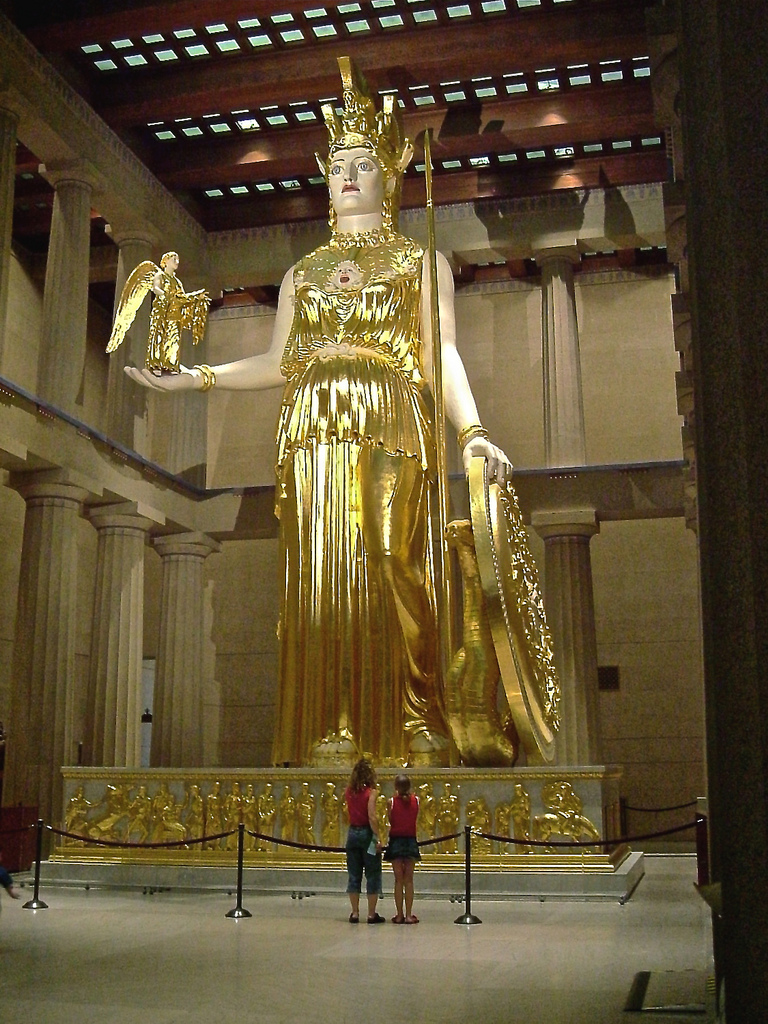 Taylor Swift (a Nashville native)
Taylor Swift (a Nashville native)
Nashville is known as the “ATHENS OF THE SOUTH”.
ACTS 17 :PAUL AT ATHENS
16Now while Paul waited for them at Athens, his spirit was stirred in him, when he saw the city wholly given to idolatry. 17Therefore disputed he in the synagogue with the Jews, and with the devout persons, and in the market daily with them that met with him. 18Then certain philosophers of the Epicureans, and of the Stoicks, encountered him. And some said, What will this babbler say? other some, He seems to be a setter forth of strange gods: because he preached to them Jesus, and the resurrection. 19And they took him, and brought him to Areopagus, saying, May we know what this new doctrine, whereof you speak, is? 20For you bring certain strange things to our ears: we would know therefore what these things mean. 21(For all the Athenians and strangers which were there spent their time in nothing else, but either to tell, or to hear some new thing.)
PAUL BEFORE THE AREOPAGUS
22Then Paul stood in the middle of Mars’ hill, and said, You men of Athens, I perceive that in all things you are too superstitious. 23For as I passed by, and beheld your devotions, I found an altar with this inscription, TO THE UNKNOWN GOD. Whom therefore you ignorantly worship, him declare I to you. 24God that made the world and all things therein, seeing that he is Lord of heaven and earth, dwells not in temples made with hands; 25Neither is worshipped with men’s hands, as though he needed any thing, seeing he gives to all life, and breath, and all things;
The East Frieze on Athena’s Parthenon, it is claimed, contained all the elements of Plato’s Atlantis texts and suggests that the Parthenon was built to commemorate both Athena and Hephaestus (Enki), since they both championed the Athenians in the epic War between Athens and Atlantis.
In Greek myth the god of smithcraft/alchemy, Hephaestus
(the Sumerian Enki)
crafted this rod
for Athena.
god of craftsmen and architects
PTAH (Egyptian)
Haphaestus (Greek)
Vulcan (Roman)
My sister lives in Birmingham, AL, home of THE VULCAN STATUE.
The Vulcan statue is the largest cast iron statue in the world, and is the city symbol of Birmingham, Alabama, reflecting its roots in the iron and steel industry. The 56-foot (17 m) tall statue depicts the Roman god Vulcan, god of the fire and forge. It was created as Birmingham’s entry for the Louisiana Purchase Exposition (1904 World’s Fair) in St. Louis, Missouri. The statue is the world’s largest iron-ore statue, and among the nation’s tallest.[2]
- ATHENA is the female counterpart of ARES (MARS), the god of War.
- Just less than 200 miles south of Nashville is REDSTONE (Mars) Arsenal and the MARSHall Space Flight Center.
HEPHAESTUS, PTAH, VULCAN, ENKI
are the biblical equivalents of:
TUBAL-CAIN
who was the first METAL WORKER
and the last descendant of CAIN
mentioned before THE FLOOD
TUBAL CAIN has even been described as
“THE FIRST CHEMIST“
and a
“PROMINENT ALCHEMIST“
because he was the holder of
“PLUTONIC THEORY.”
GENESIS 4 : DESCENDANTS OF CAIN
22 And Zillah, she also bare Tubalcain, an instructer of every artificer in brass and iron: and the sister of Tubalcain [was] Naamah.
Athena beams at a 2,200-foot long ‘rod’ that has been growing since 1996 in front of the north slope of the artificially tiered mound upon which sits the State Capitol, a few short miles away.
Known as the Tennessee BICENTENNIAL CAPITAL MALL STATE PARK located at the base of the State Capitol in downtown Nashville features a 2,200-foot long ‘rod’ laid out on 19 acres and cost $55 million. It opened in 6/1/1996 to commemorate the 200th year of the statehood of Tennessee.
I
ts designers say this rod was “forged to honor the Capitol and exalt all that is Tennessee.”
(This is an interesting choice of words considering Hephaestus also forged Athena’s rod.)
This living temple is lined with oak trees, which means it fits the biblical definition of an Ashera. The Hebrew word ashera, rendered grove in the Authorized Version of the Bible refers to a living or wooden pillar or a grove of trees of the Anunnaki goddess, Is-Tara or Astarte. Ashi is the Sumerian root for ‘heal’. These healing pillars of worship, where the Great Wise Serpent/Spirit (Enki) manifested, were forbidden by the Jewish patriarchy. The fact that the ashera was the place of worship of Ishtar is integral to decoding the Mall.
At the apex of the Bicentennial Mall in Nashville, is a Stonehenge-like stone circle called THE COURT OF 3 STARS.
The stone circle or Gilgal
50 (20′ tall) (4′ diameter) Egyptian djed-like pillars hold 95 bells of different pitches (one for each county in Tennessee) that form a musical instrument called a carillon – the largest in the world.
The 95 bells resonate with a 96th bell located beside the Capitol.
A carillon (US: /ˈkærəlɒn/ or UK: /kəˈrɪljən/;[1] French: [kaʁijɔ̃]) is a musical instrument that is typically housed in the bell tower (belfry) of a church or municipal building. The instrument consists of at least 23 cast bronze, cup-shaped bells, which are played serially to produce a melody, or sounded together to play a chord. A traditional manual carillon is played by striking a keyboard – the stick-like keys of which are called batons – with the fists, and by pressing the keys of a pedal keyboard with the feet. The keys mechanically activate levers and wires that connect to metal clappers that strike the inside of the bells, allowing the performer on the bells, or carillonneur/carillonist to vary the intensity of the note according to the force applied to the keys.
In medieval times, swinging bells were first used as a way of notifying people of imminent church services, and for such as fires, storms, wars and other secular events.
Carillon music is typically written on two staves.
At the center of the stone circle (gilgal)of this acoustic chamber or satellite dishis an IRON RODwhere you experience an intense reverb when making sound.
- The Ark of the Covenant was carried on 2 staves (by priests)
- Those who have the KEY OF DAVID, God has left an open door, meaning those who keep his commandments which were in the ARK…not an acoustic tuning device played by pressing KEYS and written on 2 staves.
- We are His instruments of mercy and righteousness.
- We as Israel are the Rod of God’s Inheritance.
- Where 2 or 3 are gathered in my name, I will be in the midst of them.
- God will rule the nations with a ROD OF IRON.
The Floor and the Pillars charge the court of 3 startswith Positive (+) and negative (-) polarity like electric circuit.
THE FLOOR is made of granite loaded with quartz chrystal associated with the Male principle (+)
and Fire.
THE LIMESTONE PILLARS are associated with the Female principle (-) and Water.
ELECTRIC SWITCH
COURT OF 3 STARS
CAPUT MORTUM
In alchemy, caput mortuum (alternately
called nigredo) signified a useless substance left over from a chemical operation such as sublimation and the epitome of decline and decay;
Alchemists represented this residue with a stylized human skull, a literal death’s head.
The starting point for Enki’s alchemical work of transforming a human – the impure or base metal – into pure gold.
Right next to the Asherah Grove at Bicentennial Park is the WORLD WAR II MEMORIAL.
- 28002 ft Granite plaza which contains 10 vertical pylons engraved with images from war
- The focus is an 8 ton solid black granite globe that rotates on a cushion of an 1/8 of water.
- TO the north beyond the globe is a Grove of HOLLY TREES, recalling the sacred spaces of the greeks and romans.
- When the sun shines on it, it becomes “the black sun”, the symbol for eclipses, but also the Nazi’s order of the Black Sun.
- It was built by Germans and is located right next to “Germantown” in Nashville.
The Park is in the shape of the SEAL of SOLOMON used to bind spirits.
It also looks just like the Rod of Meru, which is supposed to be antennae, mandala, pneumonic device designed to guide the neophyte in meditation and communion. It was used by the Annunaki for sending messages heavenward. The immortals of the Great Spirit of the Serpent lived at Meru, because the protecting power of the Healing Universal life energy – the Key of life- emitted by Meru.
Mt. Meru in Hindu Myth is a golden mountain that stands at the center of the Universe and is the Axis of the World.
William Henry was Researching Franklin D. Roosevelt’s quest for the secrets of Jesus in Shambhala, the apex of Meru, Henry Wallace, his secretary of Agriculture and partner in the Grail Quest sent a coded letter to Nicholas Roerich that said “A Sacred Casket (coffin)” marked by 7 stats under 3 stars” (in America).
- Tennessee is the only state flag with 3 stars.
- The Park was built right next to a ceremonial mound where the number of bodies makes it a great coffin.
- The Arabs called the 7 stars of the Big Dipper “NASH”, which meant “great coffin”.
- The Sumerians called the constellation Meru meaning “sacred Casket”.
- Middle Tennessee is called the “Mero District”
- “Meru” is Sanskrit for Spine.
- The Big Dipper is in Ursa Major aka (the Plough or Odin’s Wain/Wagon)(used for threshing)
